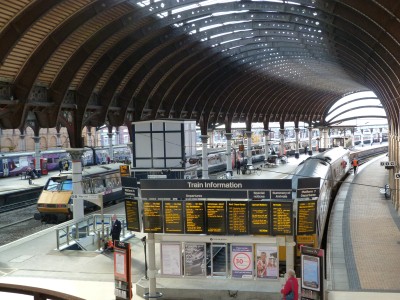
York is a major junction on the east coast rail network.
The museum has been formed from the maintenance workshops and sidings.

Powerful but inefficient it was used on the London to Brighton line between 1880 and 1920.
The carriage behind it here is one of the royal trains of the era.
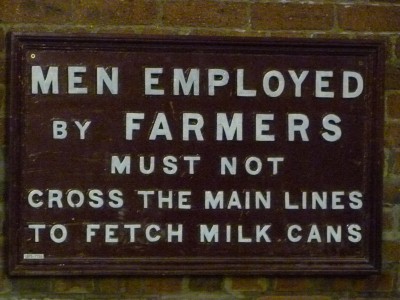
No wonder working to rule became a way for railway workers to stop the trains.
We thought perhaps the farmers or female employees had to fetch milk cans.
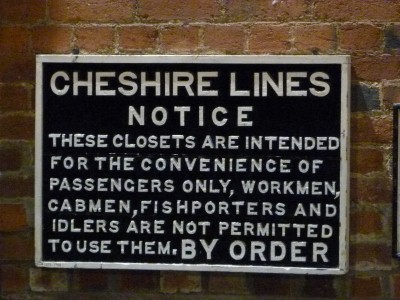
Women presumably didn't want to use the closets.
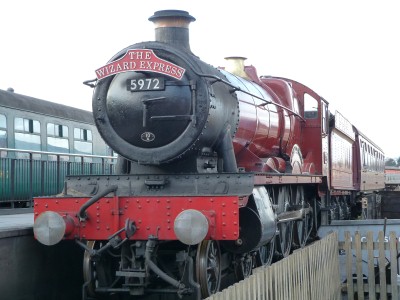
Whoever would have thought it wasn't a computer generated thingo. The locos in the museum are nearly as good as the real thing!
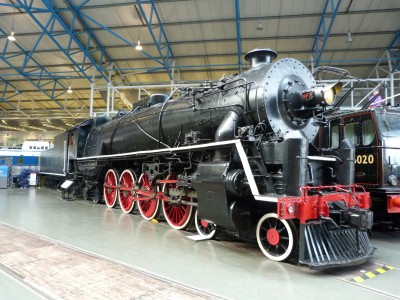
A sort of scaled down version of an American loco suitable for big hills, tight curves and weak bridges. It only weighs about 195 tons.
The Chinese gifted it to the museum in 1981.
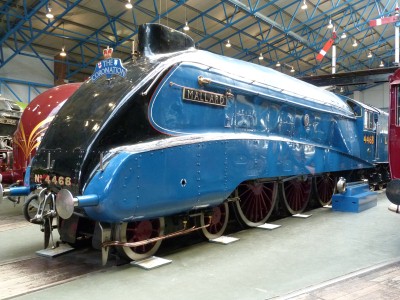
Streamlined locos with large driving wheels were an outcome of the competition between west and east coast railway companies to have the shortest journey times.
The streamlining reduced the drag. The big wheels meant they could travel faster, but the limit was getting them started without spinning the wheels. Steam locomotives don't have gears.
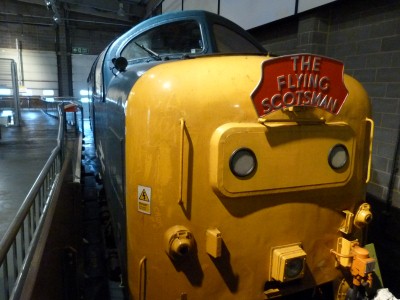
The steam loco Flying Scotsman, number 4472, is normally on show at the museum when it isn't pulling special trains.
Sadly it was in Barry for a major rebuild.
I once saw it by chance on a wet, cold, blustery Sunday evening in about 1967 pulling a train of Pullman cars through Doncaster station. All shiny and gleaming. With the sound of power. Very impressive.
I think Ali only missed it here because I'd told her how magnificent it is.
One of the things that hasn't changed about England is the way in which people find out about things. There were a myriad of notices and displays about the Flying Scotsman but we had to ask where it was.
Just as well the museum was free entry!
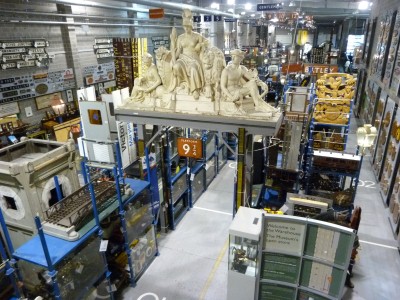
Along with a host of other memorabilia.
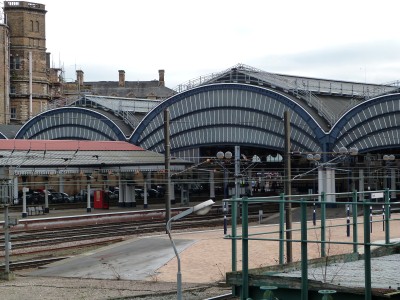
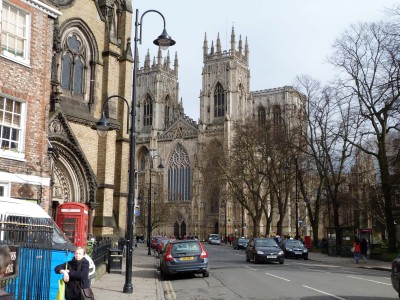
York Minster and the centre of town.

This is the entrance to St Wilfred's Catholic Church just across the road.
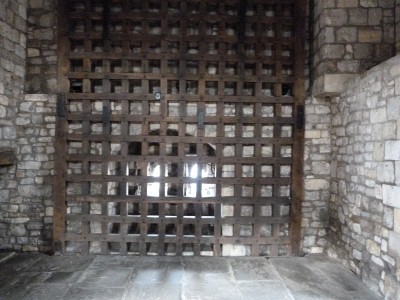
If gate means street then bar means gate.
Easy really.
Each of the bars seemed to have its own museum. If we'd fone into every one we'd have been paupers by the end of the day.
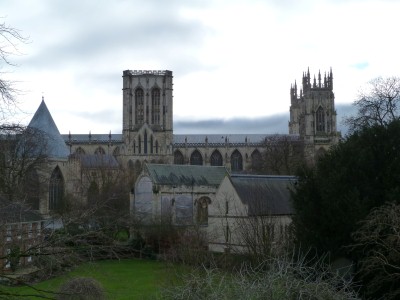

We knew we weren't going to find a tower tour.
Both Lincoln Cathedral (GBP50,000 per week) and York Minster (GBP20,000) per week were keen to tell us how much the upkeep is. Presumably so we would feel better about paying for their tours.
We figured if they couldn't tell us how good the tour was we couldn't judge whether it would be value for money.
Just selfish I guess. And isn't marketing bizarre.
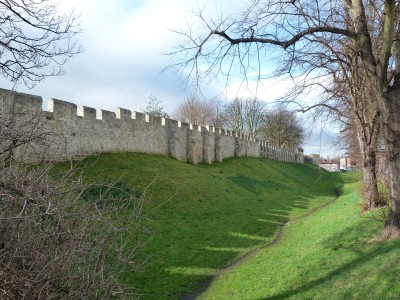
The origins of York go back before the Romans. The walls are medieval.
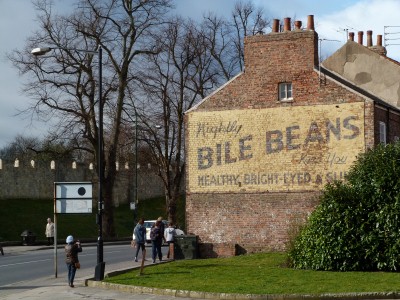
"Nightly Bile Beans keeps you Healthy, Bright-Eyed and Slim"
We're not sure if they are still sold and whether they are an approved drug according to whatever laws etc.
But so much more enticing than "an apple a day". Probably on a par with cod liver oil.
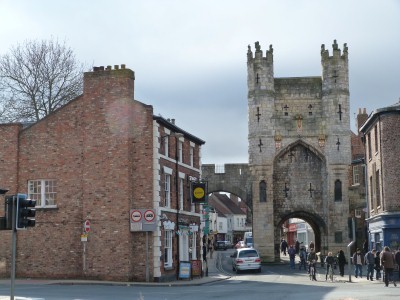
Named after the monks that lived nearby.
Easy really!
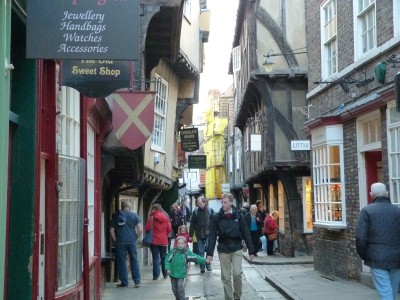
And the street off to the right is Little Shambles.
York seemed to have lots of people walking around. Just like us.
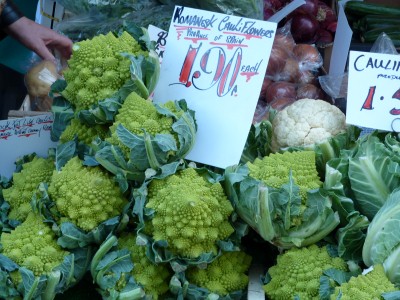
The spelling is all their own.
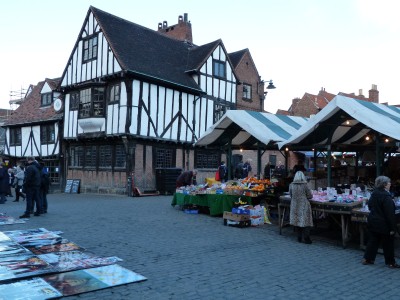
Unlike Asia I expected the tarpaulins to be above my head height.
Dissappointed.
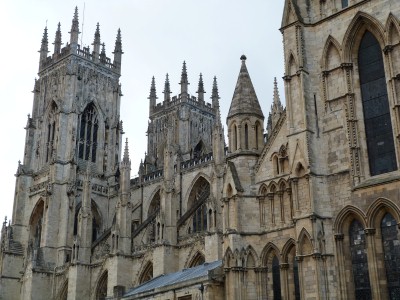
There's a hint of flying buttresses in the middle.
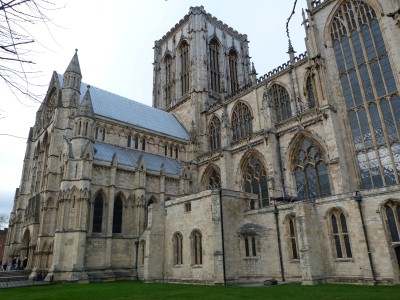
So the story goes, if maintenance is ever stopped the Minster reverts to the Catholics.
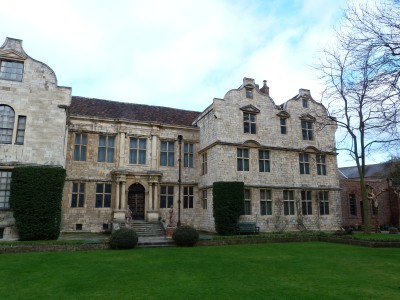
Now owned by English Heritage and offering the obligatory tea shop.
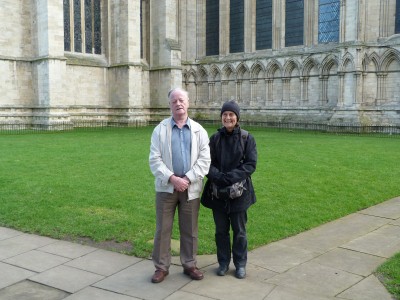
He spotted us wondering why there were some flowers on an unmarked grave at the foot of the wall.
Obviously loved York and we were keen to listen.
How does one say thankyou for time and info freely given.
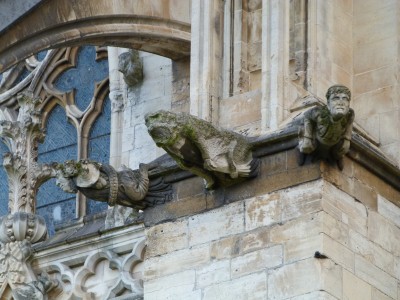
I thought they were gargoyles initially but on closer inspection there's nowhere for water to drain from or to fall out of.
I can't imagine what religious significance they have. I guess the stonemasons must think they are ornate.
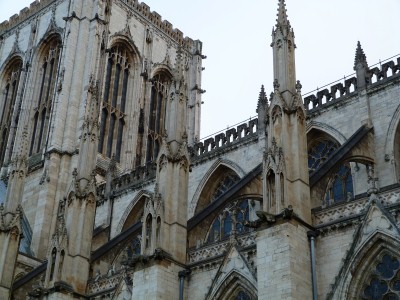
They look a bit slender and straight to me, I'm not sure what keeps them up.
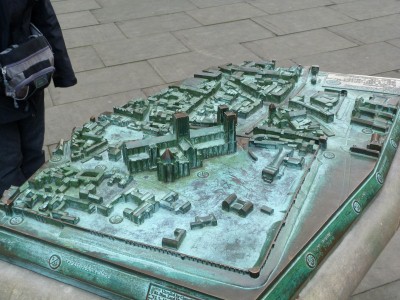
The wall in the foreground is about where we walked.
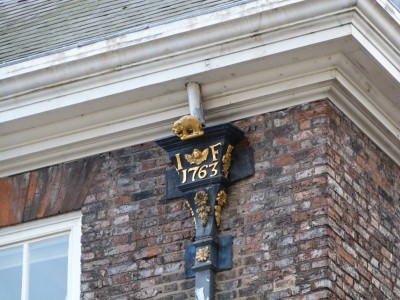
When his wife died it was deemed inappropriate for his two unmarried daughters to share a house with him.
So he built another house across the road from the Minster and his house.
There are apparently two such drain pipes. We failed miserably to find the second.
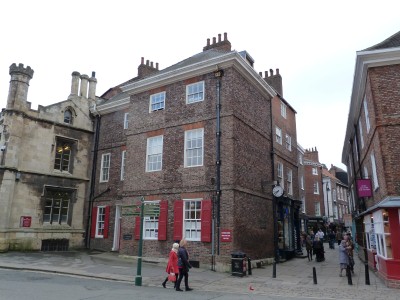
The street leads to Stonegate.
The building to the left is the Minster school.
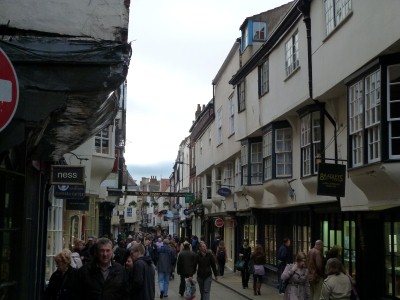
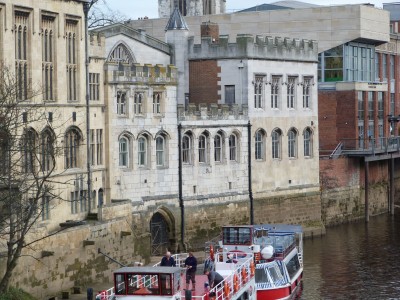
About as close as we could get without getting wet or walking through the council offices.
This is taken from a bridge which has at either end a tower. The towers were rented for a peppercorn each year for a few hundred years. It allowed the renter to stretch a chain across the river and charge a toll for passing water traffic.
We haven't discovered what happened to the peppercorn once paid. Presumably the value of peppercorns was inflation indexed so there was no need to adjust the rent.
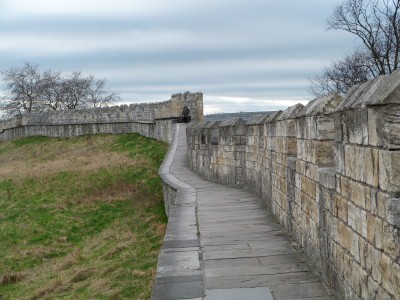
This stretch was much more to our liking.
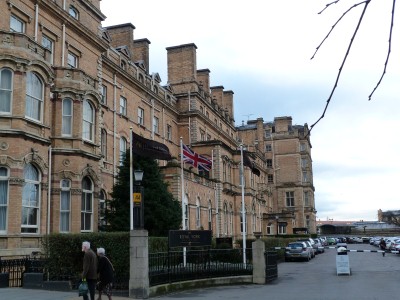
Good Victorian Architecture.

The bus stop was about 200 yards down the road for a bus to the railway station.
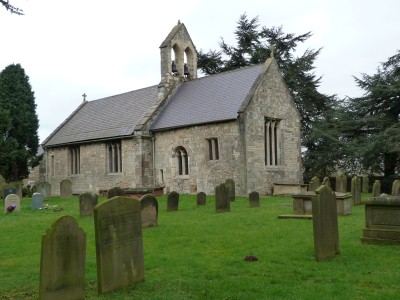
This is St Evrilda's Church - one of only two in England dedicated to the saint.
